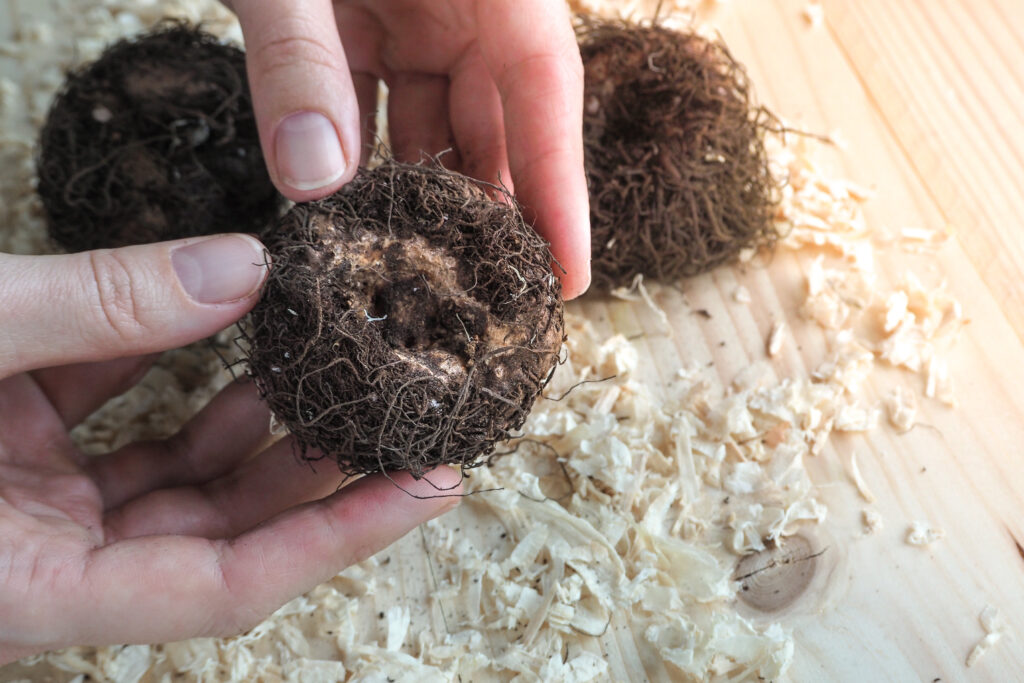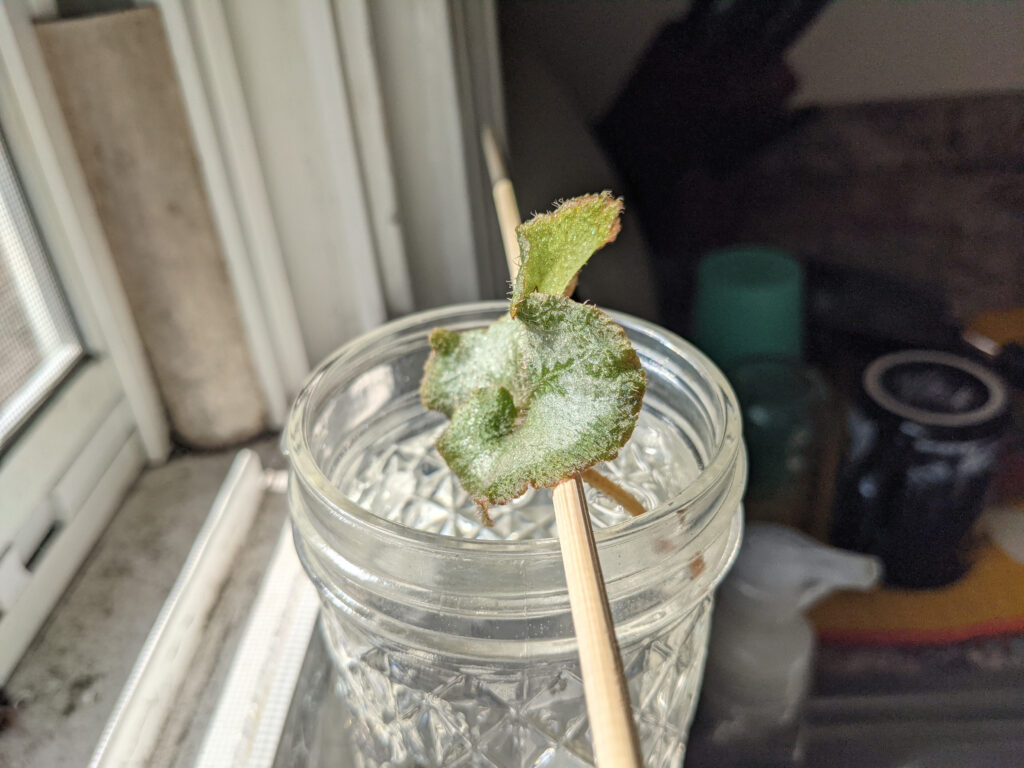Begonias are popular among gardeners and indoor plant enthusiasts due to their vibrant colors and ease of care. Begonia bulbs are available in various types, each with unique characteristics and growing requirements.
Whether you’re a seasoned gardener or a beginner, understanding the different kinds of begonia bulbs can help you choose the perfect variety for your space. In this article, we’ll explore the different types of begonia bulbs, their characteristics, and how to care for them.
Types of Begonia Bulbs
Tuberous Begonias

The tuberous begonias are one of the most popular types of bulbs.
©Stanislav78/Shutterstock.com
Tuberous begonias are one of the most popular types of bulbs. They produce large, showy blooms in various colors and can be grown indoors and outdoors. Some popular varieties of tuberous begonias include:
- Picotee: These tuberous begonias have frilly white petals with pink edges, making for a striking contrast.
- Nonstop: Nonstop begonias are known for their large, double blooms that come in various colors, from bright reds to soft pinks.
- Hanging basket: As the name suggests, these begonias are ideal for growing in hanging baskets due to their trailing growth habit.
Begonias come in varied tuberous cultivars. As the growing season ends, most plants start developing tubers. These plants’ tubers and dormancy aid them in surviving each year’s challenging growing seasons.
There are also complex hybrids known as “tuberhybrida types,” which prefer chilly conditions because they were mainly developed from high-altitude Latin American species. Yet, numerous tuberous species from other regions prefer warmer temperatures.
Rhizomatous Begonias

The rhizomatous begonias are another popular type of begonia bulb, known for their unique foliage and often smaller, more delicate blooms.
©Jtaja/Shutterstock.com
Rhizomatous begonias are another popular type of begonia bulb, known for their unique foliage and often smaller, more delicate blooms. Some popular varieties include:
- Rex begonia: Rex begonias have large, textured leaves with intricate patterns of colors ranging from deep greens to purples and pinks.
- Iron cross begonia: This begonia gets its name from the distinctive iron cross pattern on its leaves, which are dark green with red undersides.
- Angel wing begonia: Angel wing begonias have long, pointed leaves that resemble wings and produce clusters of delicate pink or white flowers.
Fibrous Begonias

Wax begonias have waxy leaves and small, brightly colored blooms in shades of pink, red, or white.
©Halit Omer/Shutterstock.com
Fibrous begonias are the most commonly grown cultivars, often used as houseplants or in outdoor garden beds. Their small, delicate blooms come in numerous colors, from pinks and reds to yellows and whites. Some popular cultivars include:
- Dragon wing begonia: This variety produces large, cascading clusters of red or pink flowers and is ideal for hanging baskets or as a ground cover.
- Gryphon begonia: Gryphon begonias have large, glossy leaves with a silvery sheen and produce small, delicate pink or white blooms.
- Wax begonia: Wax begonias have waxy leaves and small, brightly colored blooms in shades of pink, red, or white.
How to Plant and Care for Begonia Bulbs
Below you’ll find the basic requirements to plant begonia bulbs successfully and take care of them, maintaining the plant in the appropriate conditions. Although begonias are generally easy to plant, there are some requirements. Below, we have listed everything you need to know to plant begonias successfully.

Most begonia transplants should be spaced 6 to 8 inches apart, but you should consider the plant’s mature size to plant it accordingly.
©Andrea Izzotti/Shutterstock.com
When to Plant
Plant after all danger of frost has passed because these plants are particularly frost-sensitive. Even moderately cold temperatures of 50°F could affect your plants, so you’ll need to pay extra attention to the weather.
Where to Plant
Choose a spot that receives shade or filtered sunshine; the optimum times are morning and afternoon when it is warm. Choose a dark-leaved type or one with enhanced sun tolerance for sites that receive more direct sunlight. To avoid powdery mildew, plant where there will be adequate air circulation.
How to Plant
Most begonia transplants should be spaced 6 to 8 inches apart, but you should consider the plant’s mature size to plant it accordingly. You can start tubers indoors by spacing them 1 inch apart in a shallow tray filled with moist potting soil with the hollow side facing up.
Put the dish in a dimly lit area and mist the potting mix just enough to keep it moist but not drenched. In about four weeks, tubers should begin to sprout; once the sprouts are an inch tall, you should transfer them to a brightly lit room.
You can plant your begonias outdoors when frost is no longer a threat to your plants.
Basic Requirements
Below, there is a list of essential requirements to keep your begonias healthy:
- Zones: Most types grow in temperatures of 20 to 50°F
- Height/Spread: Their height varies from six to 12 inches, but some bushy varieties can reach up to 5 ft tall!
- Sun exposure: Sun-to-shadow exposure changes according to the variety.
- Bloom Time: this may change according to the cultivar. For instance, wax and tuberous begonias bloom from the beginning of summer until the first frost. If planted indoors, blooming times may vary, and some begonia types bloom yearly.
- Soil: All begonias need evenly moist, well-draining soil fertilized with organic matter.
- Fertilizer: A balanced, water-soluble fertilizer should be applied once per month during the growing season. Use a fertilizer with a higher nitrogen content for plants grown purely for their foliage, such as angel wings.
- Watering: Regular watering is essential for healthy plants. Always keep the soil moist but not soggy to avoid root rot. Keep the foliage dry to prevent leaf spots and fungus illnesses.
- Winter care: Begonias can be taken indoors to overwinter with proper maintenance. We recommend increasing the humidity and placing them in a window with bright, filtered light.
- Pests: Susceptible to powdery mildew, mealybugs, spider mites, thrips, and whiteflies, among other diseases and plagues. Additionally, overwatering and damp soil can result in stem and rhizome rot.
In summary, plant the bulbs in well-draining soil and water regularly to care for begonias, keeping the substrate moist but not waterlogged. They usually prefer partial shade and fertilize monthly during the growing season.
Propagation Methods for Begonia Bulbs

Begonias can be grown from seed, but it’s far simpler to make them from cuttings, and you can do this with most varieties.
©Winkcc/Shutterstock.com
Birds, bees, and even begonias all reproduce by producing offspring. However, these plants need a little assistance from gardeners. Begonias will grow from seed, but it’s far simpler to make them from cuttings, and you can do this with most varieties.
Start by snipping off a few healthy leaves from your preferred begonia. Cut the leaves into wedges while upside down using a clean, sharp knife. Make sure each piece has a vein.
You don’t have to bother slicing the leaves if you only want a few new plants. Remove some leaves from the parent plant, leaving ½” to 1” of the petiole attached to each leaf. The petiole is the stalk that holds the leaf to the plant’s stem.
To create a space to care for your leaves or cuttings, fill a tray with a well-draining, sterile potting mix. You can use a mixture of perlite, vermiculite, and peat moss. Stick the leaf petioles or wedges into the soil, and slip the tray into a plastic bag.
Keep it out of direct sunlight but in a warm, well-lit spot. Mist the soil as needed so the cuttings stay moist but don’t keep them so wet that water stands on them. This could promote disease or rot.
In three to four weeks, you should start to witness the formation of roots. You’ll have tiny plantlets prepared to be transplanted into the garden or pots in six to eight weeks from the time you started.
Re-rooting
If you’re looking for a more straightforward process, re-rooting your cuttings in fresh, clean water will be enough to grow baby begonias. The perfect size for this is baby food jars. Once the roots are around 12″ long, the cuttings will be ready for potting.
You can also use rhizome cuttings to generate rhizomatous begonias, commonly grown for their lovely leaves. The horizontal, thicker stems that develop next to or just below the soil are rhizomes.
You will need patience and careful handling to grow begonias through their dust-like seeds. However, the seeds from hybrid begonias won’t grow shoots resembling the mother plant. Creating hybrids happens by fusing different cultivars, and they are usually sterile.
Conclusion
Begonias are stunning, easy-to-grow plants in assorted colors, shapes, and sizes. There are several different types of begonia bulbs to choose from. Using the appropriate propagation method and fulfilling the basic requirements for their successful growth is vital.
The most common begonia bulbs are tuberous ones, known for their large, showy flowers and famous for use in gardens and containers. Fibrous bulbs are often in beds. Rhizomatous bulbs are less prevalent but produce beautiful foliage and are often grown as houseplants.
When selecting begonia bulbs, it’s vital to consider the plant’s specific needs, including light, water, and soil requirements. With the proper care, begonias can thrive and add color and beauty to any garden or indoor space.
The photo featured at the top of this post is © Opachevsky Irina/Shutterstock.com
FAQs (Frequently Asked Questions)
Are begonias sun or shade lovers?
Although some types may withstand full sun, begonias grow best in partial shade or a location that gets morning and afternoon sun.
Do begonias survive in the cold?
Most begonias won’t survive the cold. However, hardy begonias (Begonia grandis) are cold-tolerant plants. They reach heights and widths of twelve to eighteen inches and do well in places with partial to complete shade. This cultivar can grow in hardiness zones 6 to 10.
They have huge, medium-green leaves in the shape of an open heart and bloom from the beginning of summer until the first frost. The plants will entirely wither away in the fall and return the following year in the late spring.
What are strawberry begonias?
Strawberry begonia (Saxifraga stolonifera) isn’t a true begonia but has a similar leaf structure: fuzzy, with green and silver variegation and hints of red. It spreads by producing runners, or stolons, like strawberry plants.
Thank you for reading! Have some feedback for us? Contact the AZ Animals editorial team.






